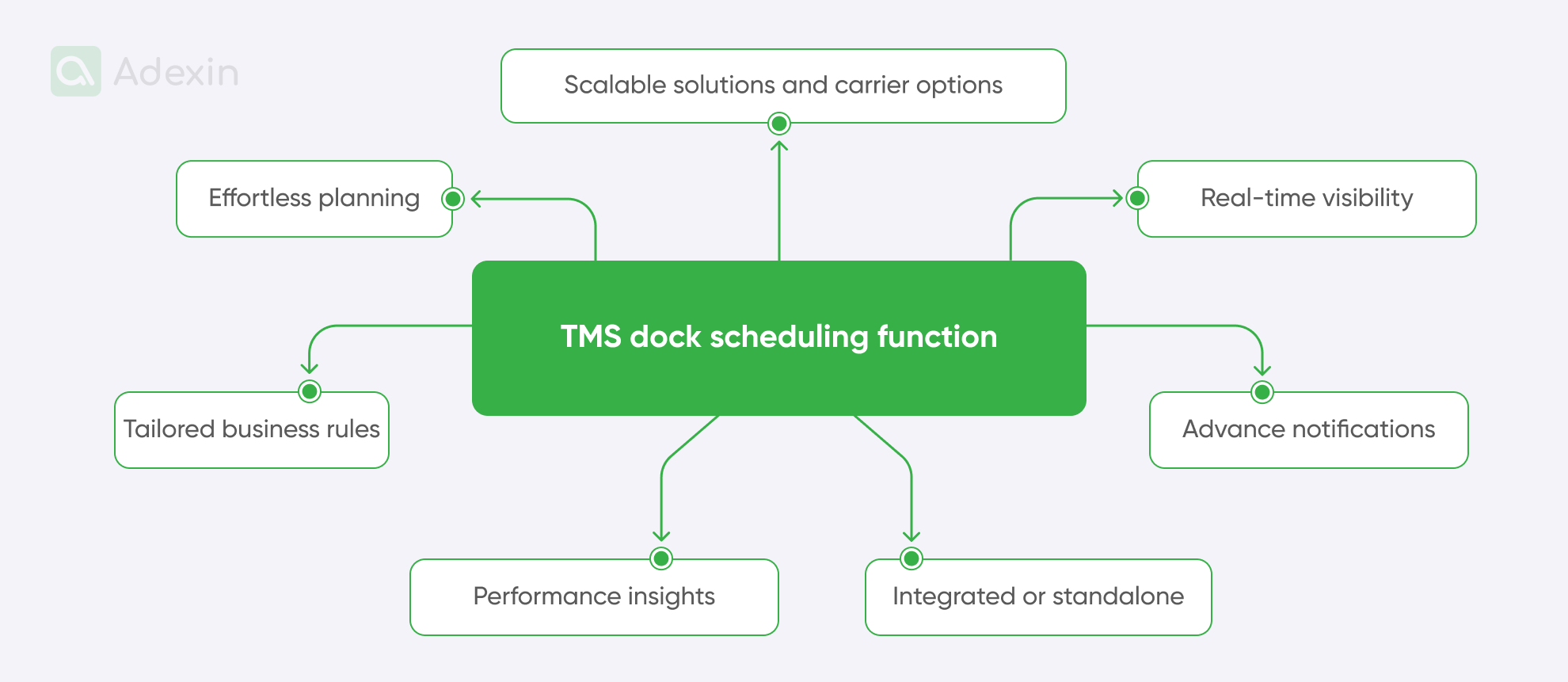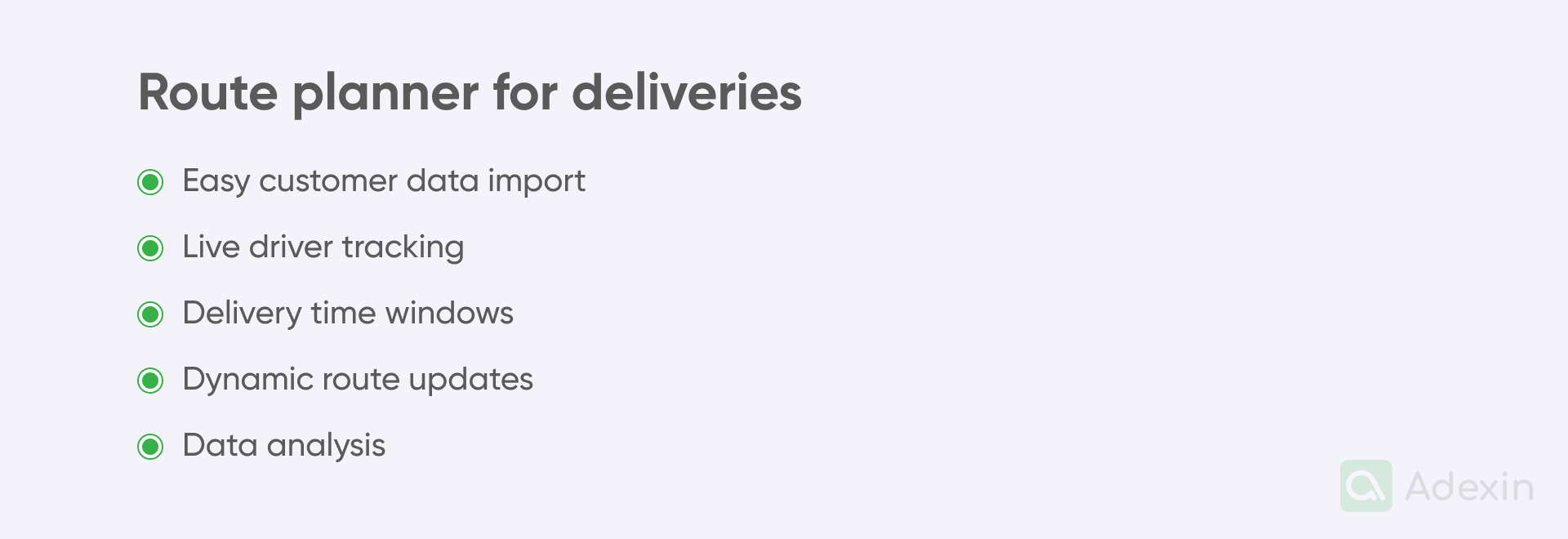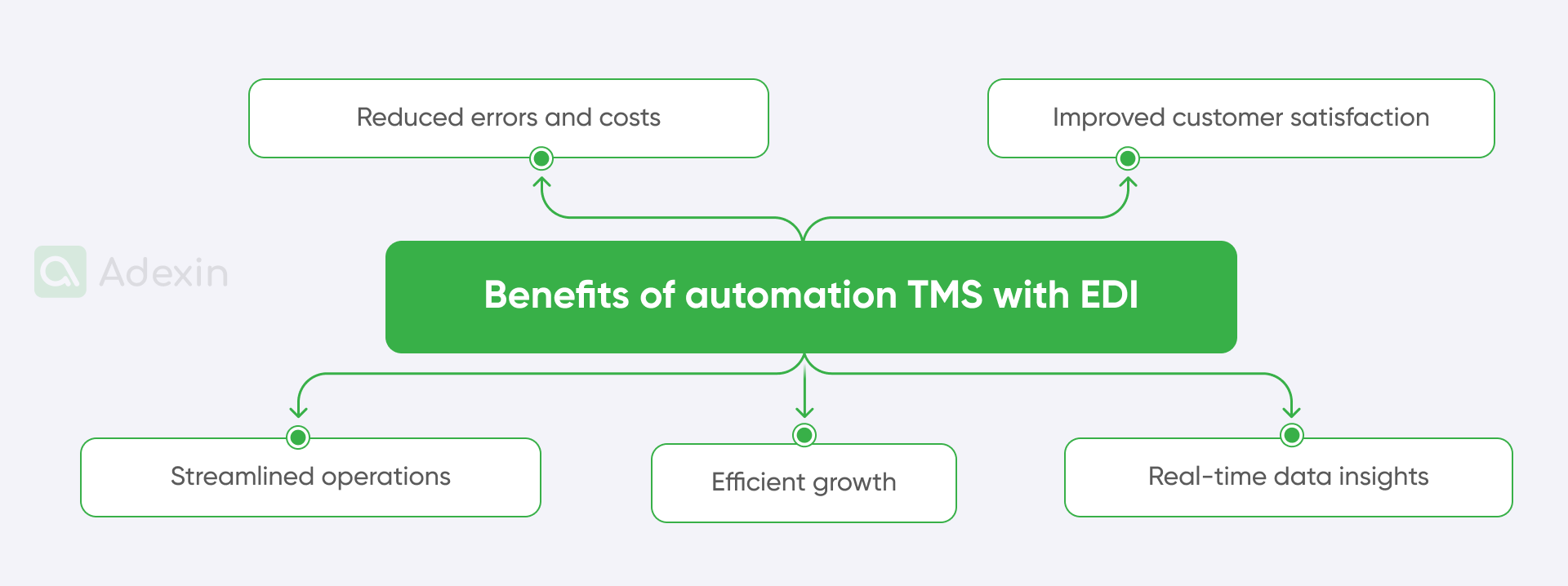Summary
Being a small and medium business (SMBs) in the transportation and logistics industry poses several challenges due to the ever-changing environment. However, the modern world offers numerous advantages and benefits to companies through the use of Transportation Management Systems (TMS). The functions of TMS can vary, and your SMBs may not require all of them right from the start.
Nevertheless, there are seven key features, including efficient dock scheduling, business intelligence tools, smart route planning, collaborative dispatch software, and more, that empower small and medium transportation companies. With the help of TMS, SMBs can become highly competitive even in a market filled with large logistics and transportation providers. Today, we'll explore TMS and its most valuable features in more detail.
What makes a good TMS?
Transport Management System (TMS) holds crucial value for all businesses operating in the transportation industry. Any company involved in daily shipments, whether by sea, air, or road, requires a well-suited TMS. By integrating TMS software into your daily operations, you can significantly impact cost savings and optimize your company's resources. In today's data-driven business environment, TMS is indispensable for managing and optimizing transportation operations.
Even if you're already using various systems to enhance your business with TMS capabilities, you may still consider integration to consolidate core data in one place. Evaluating which TMS features can truly yield your desired results is essential for staying competitive in the market. Small and medium transportation business owners may find TMS features highly interesting. Despite deploying various systems to improve traceability, integration is often necessary to get the best of bread from transportation and logistics.
Seven key features make a good TMS, along with its integration ability. These are essential for businesses of all sizes in the transportation and logistics sector. It is because data-driven organizations are far more efficient and competitive.
Swift dock schedule
Dock scheduling involves optimizing and planning tools to automate dock and warehouse loading schedules. These tools are fully digitalized and available within the TMS system. Often, this feature is only accessible in TMS through custom software development. Many software providers have started selling this feature as a completely separate solution. [1]
Even if you don't wish to invest in an extended, fully-featured TMS, you can manage basic modules like fleet management and integrated dock scheduling. For small and medium transportation businesses, where time and warehouse space are no less important than larger companies, the dock schedule feature in TMS will be a great small step to enter professional transportation management.
Here are the elements of the dock scheduling system built into TMS:
Effortless planning
The TMS dock scheduling feature helps you choose the preferred method for shipment planning.
Real-time visibility
Within this feature, you can track upcoming shipments to plan effectively for inbound and outbound operations. You can stay informed and communicate effectively.
Tailored business rules
Dealing with different customers requires integrating operations across various departments. The TMS feature for scheduling docks allows you to choose the most suitable approach according to your needs.
Advance notifications
You may need to reschedule your shipments, or you'll need to manage dock space for urgent unloading cases. The TMS dock scheduling feature will allow you to stay on time with replenishment by receiving earlier notifications.
Performance insights
Thanks to the TMS dock scheduling function, you can easily monitor cycle times and more.
Scalable solutions and carrier options
A single TMS dock scheduling function can serve more than one warehouse and can connect with your carrier's system through an API.
Integrated or standalone
The TMS dock scheduling function can definitely streamline the supply chain by integrating all available systems in your warehouse.

Build in business intelligence tools for logistics
Business intelligence (BI) in transport and logistics isn't a new trend. Small and medium businesses should be ahead of the competition to spot the most valuable areas where they can invest their resources. It is because, for the average small and medium transportation business, internal resources are even more important. Therefore, business intelligence tools built into TMS can help better plan shipping routes and support planning for multimodal shipments.
A good example can be given at the point where a transportation company may not have enough resources to provide a shipment to a certain destination. By deploying smart BI tools, the company can improve forecasting and select a freight forwarder in another part of the destination.
Selected business intelligence tools embedded into TMS allow you to:
Identify and pinpoint problem areas in a timely manner.
Analyze transportation volumes and optimally utilize them.
Display and plan storage capacity.
Manage and direct a fleet of vehicles.
Determine costs and assign them to a project.
Provide tracking and tracing data for customers.
Smart route planner for deliveries
One of the main features of TMS is route planning. This area in transportation has also grown significantly to the extent that this feature can be implemented as a separate solution. Nevertheless, to save money, it is much better to decide on this feature upfront as part of the TMS. As we mentioned already, you don't have to have all the features in your TMS. It is enough if you consult experts in custom software development for transportation. They will deploy the right capabilities of the route planner in your TMS.
It is the most suited solution for SMBs and will help you avoid purchasing many features you'll probably not be able to use. So, the smart decision is to take benefits from this, which really can help your business.
Here is what the route planner feature in TMS can offer you
Easy customer data import
Effective route planning software within TMS should facilitate the simple import of customer data from various formats, including e-commerce platforms.
Live driver tracking
Reliable route planning provides real-time driver tracking, ensuring accurate Estimated Delivery Times (ETAs) and enabling quick responses to delays.
Delivery time windows
The route planner function in TMS allows you to set delivery time windows, ensuring your truck drivers don't need to wait at the dock until the next day. It enables on-time deliveries and increases customer satisfaction.
Dynamic route updates
Your TMS route planner should adapt to road conditions and allow you to add or remove stops, providing real-time notifications to drivers about traffic conditions on the roads.
Data analysis
At the end of the day, you'll want to analyze your performance to avoid repeating the same mistakes. A robust TMS route optimization software feature offers data reporting on route performance and on-time deliveries, allowing you to make quick adjustments.

Collaborative transportation dispatch software
TMS needs to collaborate with the warehouse. Your team needs to know how much space in the truck will be available in the trailer or container that arrives to pick up the pallet. Moreover, you've probably encountered situations where you unload several pallets from a trailer because the carrier didn't manage proper space for loading upfront.
Many other situations like these are very time-consuming. There is a decreasing probability that your shipment will arrive on time when people lose time for such tasks. It is where you can benefit from the transportation dispatch feature in TMS. Even if you're a SMBs , you would like to have complete visibility of the trailers and carriers arriving at your docks. If you manage your fleet, this feature can help you better deal with consignments collected from your partners and customer warehouses.
Here are the areas where the shipment dispatch feature can support your TMS:
Smart scheduling
Customized dispatching based on operational logic and business priorities
Route optimization and order grouping
Seamless, real-time integration
Automated and manual shipping options
Flexible and automated order fulfillment
Increased visibility and coordination throughout the delivery process
Real-time data and instant alerts
Integrate function - Send EDI / trucks telematics
Modern TMS integrates various technologies, and it cannot function effectively without Electronic Data Interchange (EDI). Even though EDI may not be the latest feature in TMS, it is essential for communication between different systems. EDI involves the intercompany exchange of business documents in a standardized format, essentially replacing paper-based documents like purchase orders or invoices.
Another important element for TMS is truck telematics. Truck telematics collect data via onboard sensors and GPS to provide diagnostic information to the TMS. This solution enables better truck fleet and driver monitoring. The system uses hardware to wirelessly transmit data to a central server, which can be accessed through apps or websites.
Here are the benefits of automation TMS with EDI and truck telematics:
Reduced errors and costs
Integrating truck telematics and EDI with logistics automation streamlines data entry and reduces costly errors.
Improved customer satisfaction
Logistics automation, including real-time tracking, ensures on-time delivery and keeps customers satisfied.
Streamlined operations
TMS logistics automation offers greater control over operations and freight management.
Efficient growth
EDI and truck telematics automation in TMS help manage growing operations without the need for additional resources.
Real-time data insights
Access to real-time data via truck telematics provides valuable insights for informed decision-making. TMS with automation can help you avoid costly mistakes.

Flexible UI with transportation dashboard
The user interface is extremely important for companies that are using TMS. It is because of many other systems in logistics and transportation which allow access to various departments to take the necessary information out of the system. In this case, the crucial role plays dashboards that can be available for administration employees responsible for fleet management as well as for employees in the warehouse.
Dashboards can serve all people responsible for certain operations, and TMS should allow putting together all the data to display figures important for shipment, loading, or dispatch. Having visualized access to the data can provide a clear overview of key performance indicators (KPIs). It is an important feature in TMS for all-size transportation businesses, along with small and medium companies.
Here are examples of dashboards for TMS:
Operational dashboards
TMS performance dashboards assist with real-time monitoring, offering insights into key metrics such as fuel rates, carrier rates, and prices, as well as KPIs.
Analytics dashboards
TMS utilizes analytics dashboards to analyze extensive data sets, identifying trends and facilitating data-driven decision-making, including metrics related to delivery times.
Strategic dashboards
These dashboards in TMS are well-suited for long-term planning and high-performance strategies, providing a concise overview of growth opportunities and critical concerns.
Automated billing and invoicing across various departments
TMS would be significantly less useful if a financial system for billing and invoices couldn't support its features. Many companies often place orders with various carriers through EDI with pre-confirmed rates. These carriers later invoice the shippers and await approval, the standard procedure for managing the payment system among logistics and transportation stakeholders.
Invoices can be disputed if incorrect, and carriers can adjust rates. Once approved, the system can release payment. It is the big piece of cake for standard operating procedures (SOP) for billing in logistics and transportation. Such functionality helps companies manage their daily operations to streamline the payment process. Without this feature, everything could become much more difficult. Regardless of the company's size, it is worthwhile to consider custom development for TMS that directly includes this feature in the system. There are also many other transportation management solutions you can embed into your software.
Invoicing and billing
You can create ready-to-send invoices within TMS with precise details of the shipment.
Invoice disputing
When a carrier sends an incorrect invoice, the issue can be resolved inside TMS without needing separate emails.
Payment approval
If you need to transfer a substantial amount of money on a monthly basis, this process can be automated, and TMS can assist by sending signals through APIs to financial systems.
Auto rates
TMS can have all price lists with cost and tonnage uploaded in the database to automatically set up prices for shipping with every single EDI.
Value of transport management system through Gartner magic quadrant TMS
Transportation management systems help supply chain leaders manage disruptions and mitigate risks. This statement comes from the latest report, Magic Quadrant for Transportation Management Systems, from Gartner. Evidently, it is very useful research to make sure that TMS is something that both small, medium and large businesses should consider.
In the report, Gartner has presented benchmarking for several different TMS providers. Gartner has also defined several capabilities for TMS solutions. These are as follows:
Freight sourcing and procurement
Planning
Execution
Visibility
Settlement
Analytics
Each can be provided by the seven features mentioned in this article. If you want to comply with best practices for TMS development, you can directly rely on the information provided above. [2]
Final takeaway
What do SMBs in transportation need from TMS? The answer will not be much different than the answer for larger companies. Every business in the market wants to be more competitive and save money. These goals can be achieved with 7 TMS features.
Adexin has been providing transportation software for years. We understand the everyday problems that occur in transportation. Thanks to this, we're able to develop better software that precisely matches your business needs. This is a simple calculation from our perspective and for your ROI. Contact us today, and let's discuss custom TMS and its features.
References:
[1] Gartner Glossary - Dock Scheduling; Retrieved from: https://www.gartner.com/en/information-technology/glossary/dock-scheduling
[2] Magic Quadrant for Transportation Management Systems - Gartner; https://info.manh.com/rs/260-QSQ-562/images/2023-Gartner-Magic-Quadrant-TMS.pdf?utm_campaign=23-09-noam-all-transportation-assetconsumption-GartnerCriticalCapabilities&utm_content=Analyst-report-Gartner-MQ&utm_source=marketo&utm_medium=organic-email&utm_term=download-gartner-tms-mq&mkt_tok=MjYwLVFTUS01NjIAAAGPIRIsodcSrHKbHT0kOfc5-2JnK89Dn5pyh21WcldsTNb98PENr4yY9FJ0MF5nLkh7TyTyNmKwrr5rm_OTEFMl1ar2n_ltZ4l7ja1sAgDIuI4kGg
